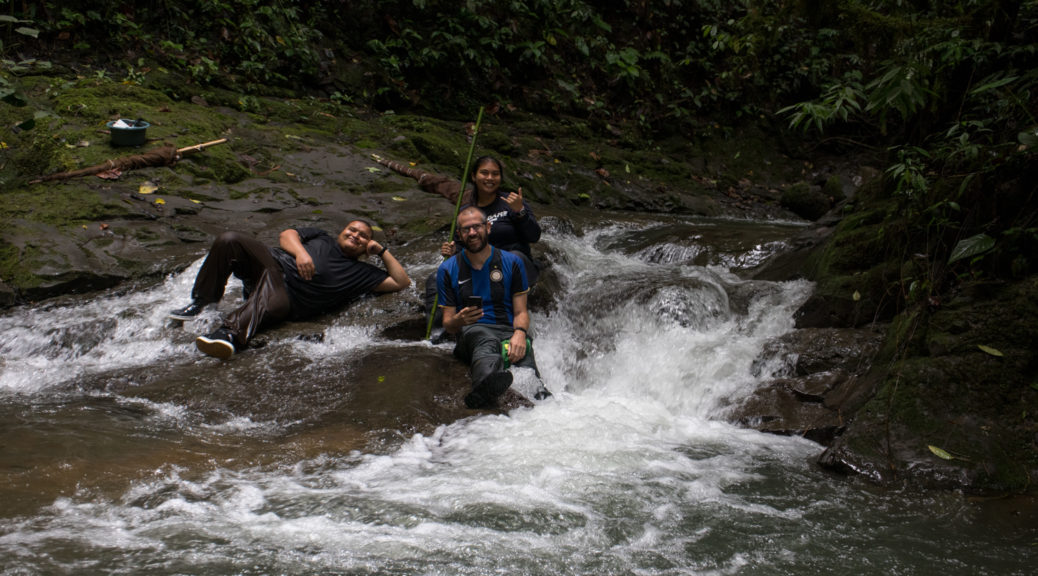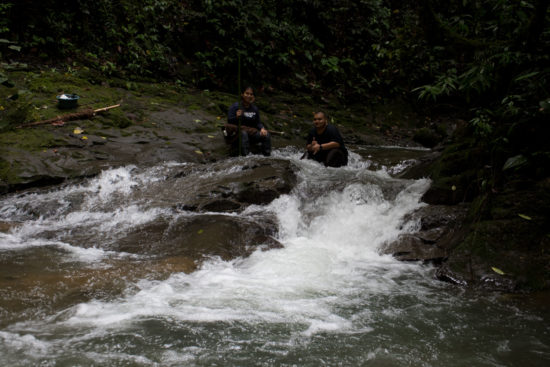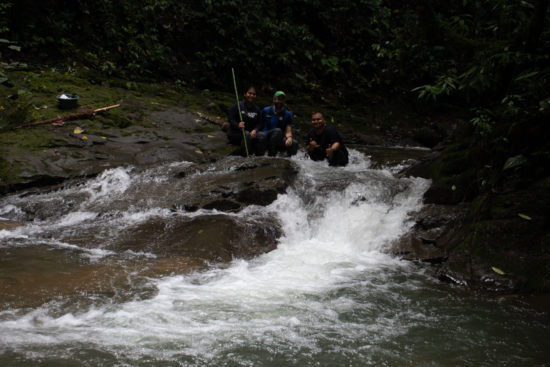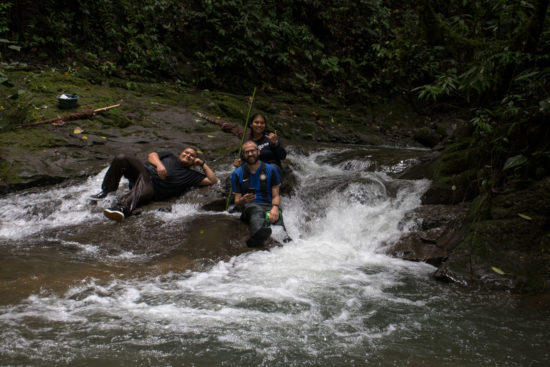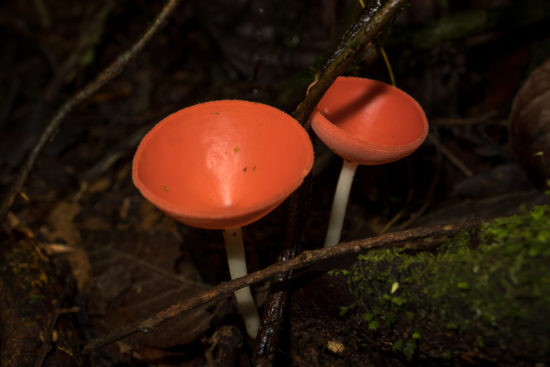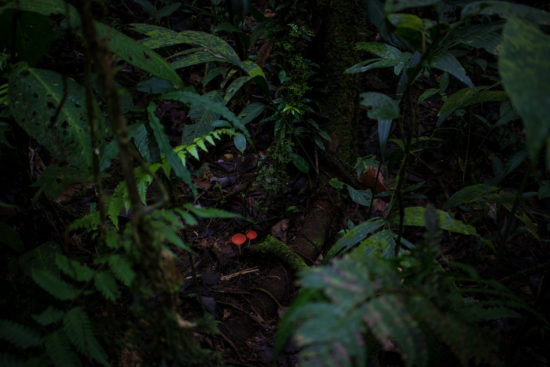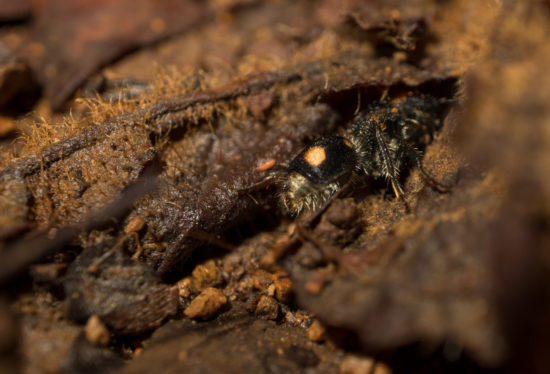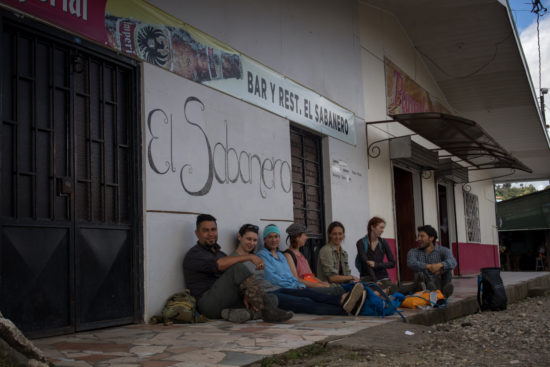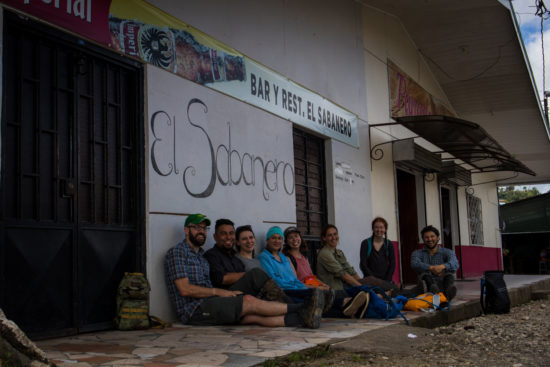I think my first encounter with Rana (or Lithobates) warszewitshii was in RBAMB over a decade ago, but I don’t know that I’ve ever posted a photograph other than their tadpoles.
Tag Archives: Costa Rica
My students and I
Zane, Ahmi and I pose as part of El Gente Del Río, 2019.
Introduction to Ahmi’s project – Fish communities at Las Cruces
One of my two students for this year’s LSAMP REU is sampling and documenting the fish communities within the rivers at Las Cruces as an extension of a previous student of mine’s project (David’s). David had discovered four species, Bryconamericanus terrabensis, Brachyrhaphis terrabensis, Rhamdia laticauda, and Trichomycterus striatus, and he had presented his work at AFS. Interestingly, at Bry. terrabensis and T. striatus, have not been reported as occurring above 1,000 meter above sea level in the literature, and he thought this could be due to (1) undersampling and reporting and/or (2) recent changes in the distribution of these fishes, possibly due to climate change. One way to find out—continued monitoring. And, hence, Ahmi’s interest.
Ahmi may be employing three survey methods (visual surveys via snorkeling, seining, and minnow trapping) and sample along the entire elevational gradient within the Las Cruces property (1,000 – 1,400 masl).
Here, Ahmi practices visual surveys—a 5-10 minute zig-zag, calling out letters that represent the most likely fishes. The water is cool and turbid, making it difficult to complete, unlike some of the rivers, like Rio Madrígal, Rio Claro and Rio Nuevo, I surveyed using similar methods years ago on the Osa Penninsula.
Next, Ahmi and Zane practice seining the same pool; the current and steep, slippery banks present some difficulty, but they do catch a few.
Seining is hard work!
Some catch from the sample, including Bry. terrabensis.
Costa Rican Salamander!
I think this might be the only salamander I’ve seen in Costa Rica—probably a plethodontid, lungless salamander in the genus Bolitoglossa. Found in a small stream pool on Cerro De La Muerte. (Yep, a few dead things today…).

Orange-billed sparrow
Orange-billed sparrows are common in the garden and along the Java trail. On this occasion, unfortunately, the bird had hit a window and died.
Walk through the Wilson Botanical Garden
High-flow at Río Java and group photo!
The beginning of June was wet—it rained nearly every day—and the river was often turbid and high. This was our first visit to the river of 2019.
Crested Guan
Crested guan, Penelope purpurascens, are common in the Wilson Botanical Garden and the surrounding forests, including secondary and primary forests. They are often startling when the flee in the forest, similar to some pheasants in North America.
First hike to San Vito
Most Sundays, the research mentors and I hike to San Vito for ceviche and patacones at El Sabanero—a seafood restaurant about 7 km (4 mi) from the station through the forest. Here are some images from the first hike to town.
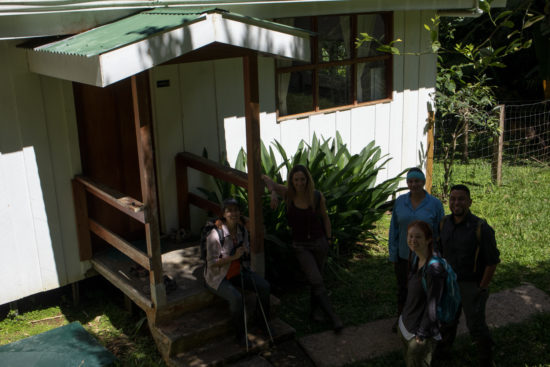
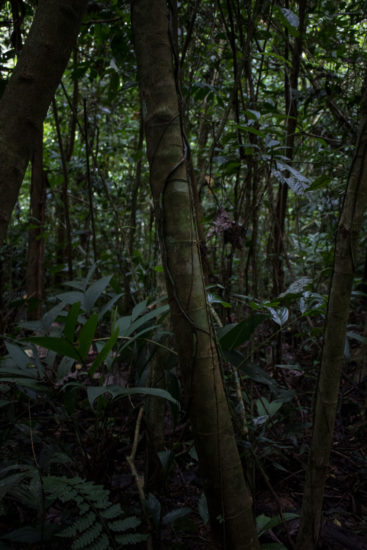
Dark, green primary forest 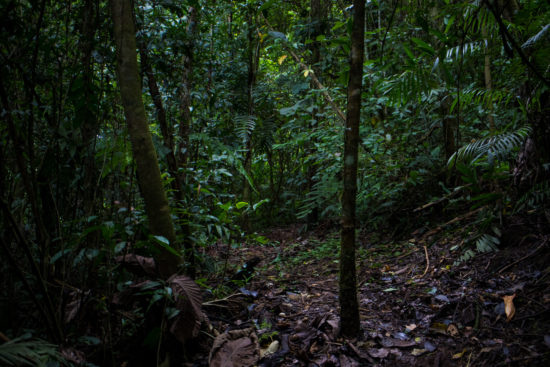
Dark, green primary forest 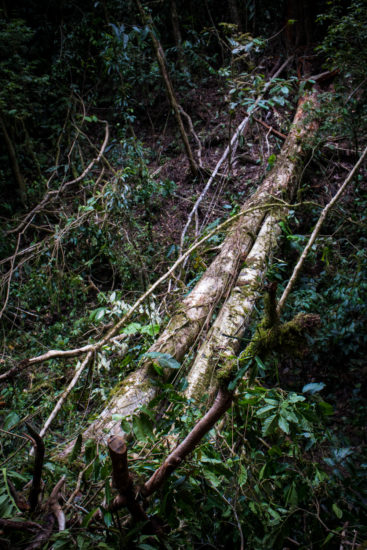
Waterfall below Melissa trail crossing. 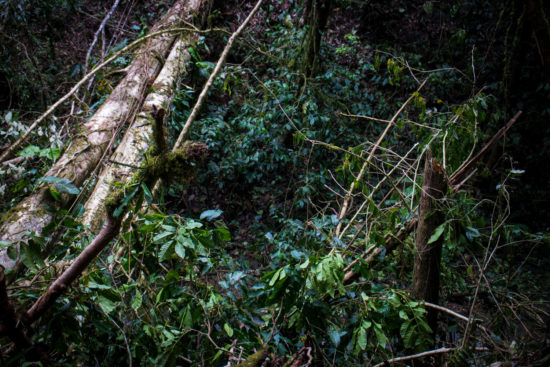
Waterfall below Melissa trail crossing. 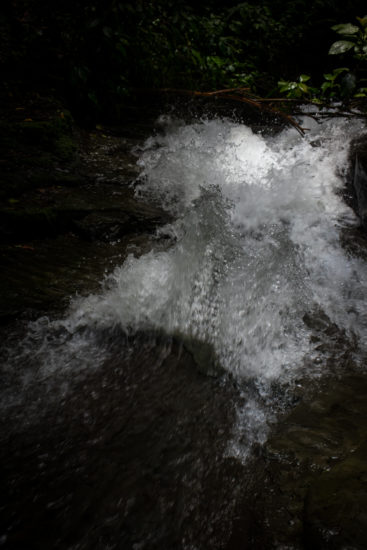
Waterfall below Melissa trail crossing.
Some cup fungus—ascomycota.
Cristian pointed out that this wingless wasp is able to deliver a strong sting and is likely mimicked by the Spotted Tiger Beetle.
Sadly, when we arrived in San Vito, we discovered that El Sabanero’s scheduled had changed—previously, it opened by 11 or 12 (approximately…) on Sundays. Now, the restaurant opens at 3, which is a bit late for a bunch of hungry biologists who eat breakfast at 6:30 am. We tried another restaurant in town, but it wasn’t quite as good—the ceviche was fine, but the traffic was loud and produced some less-than-pleasant fumes.
Trap-jaw brood
A trap-jaw ant (Odontomachus bauri) potential queen dispersing with the help of some wings!





